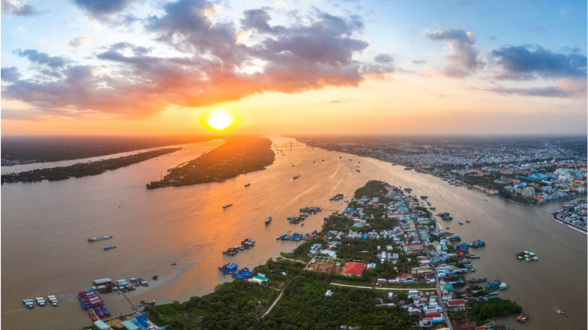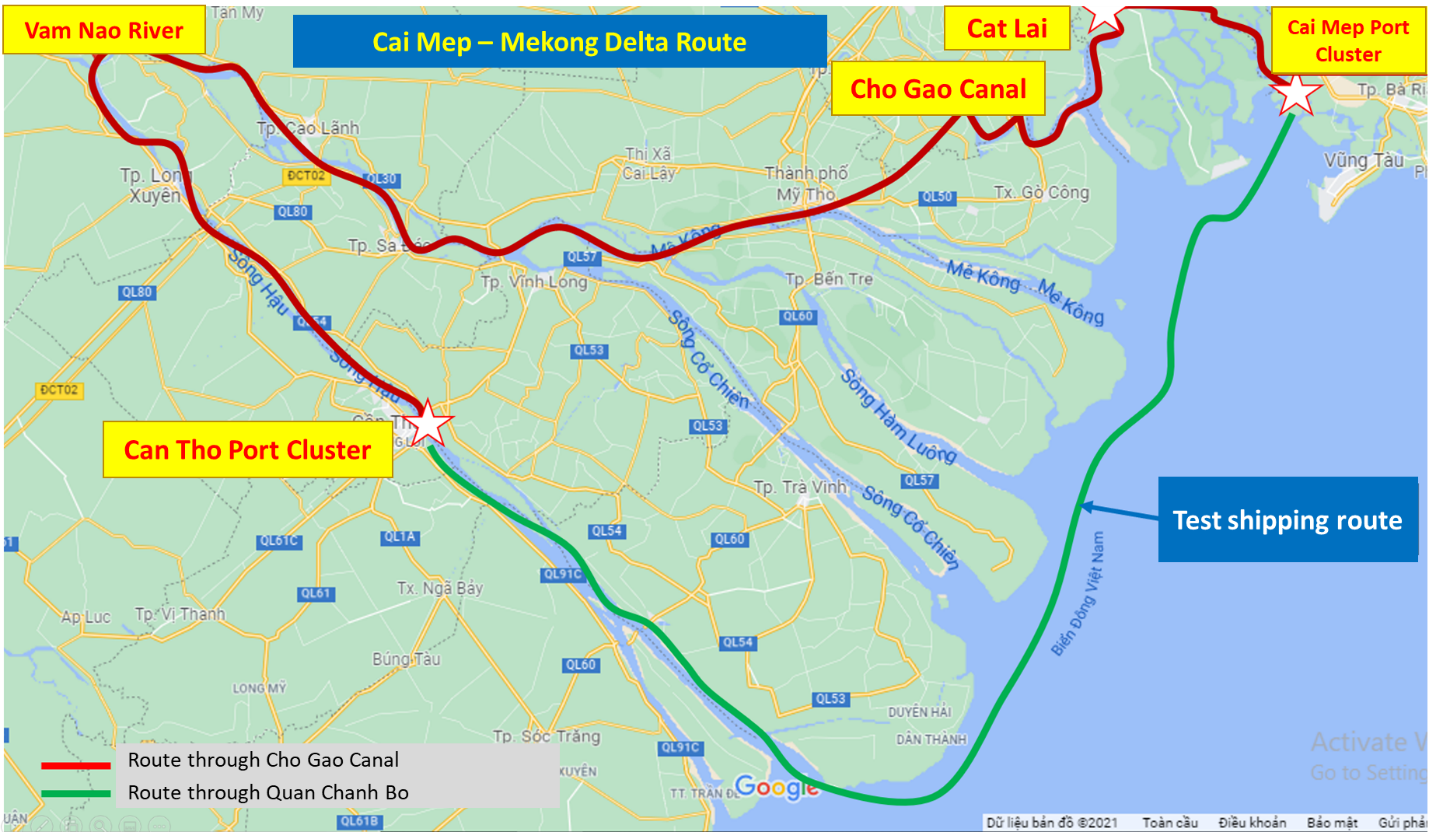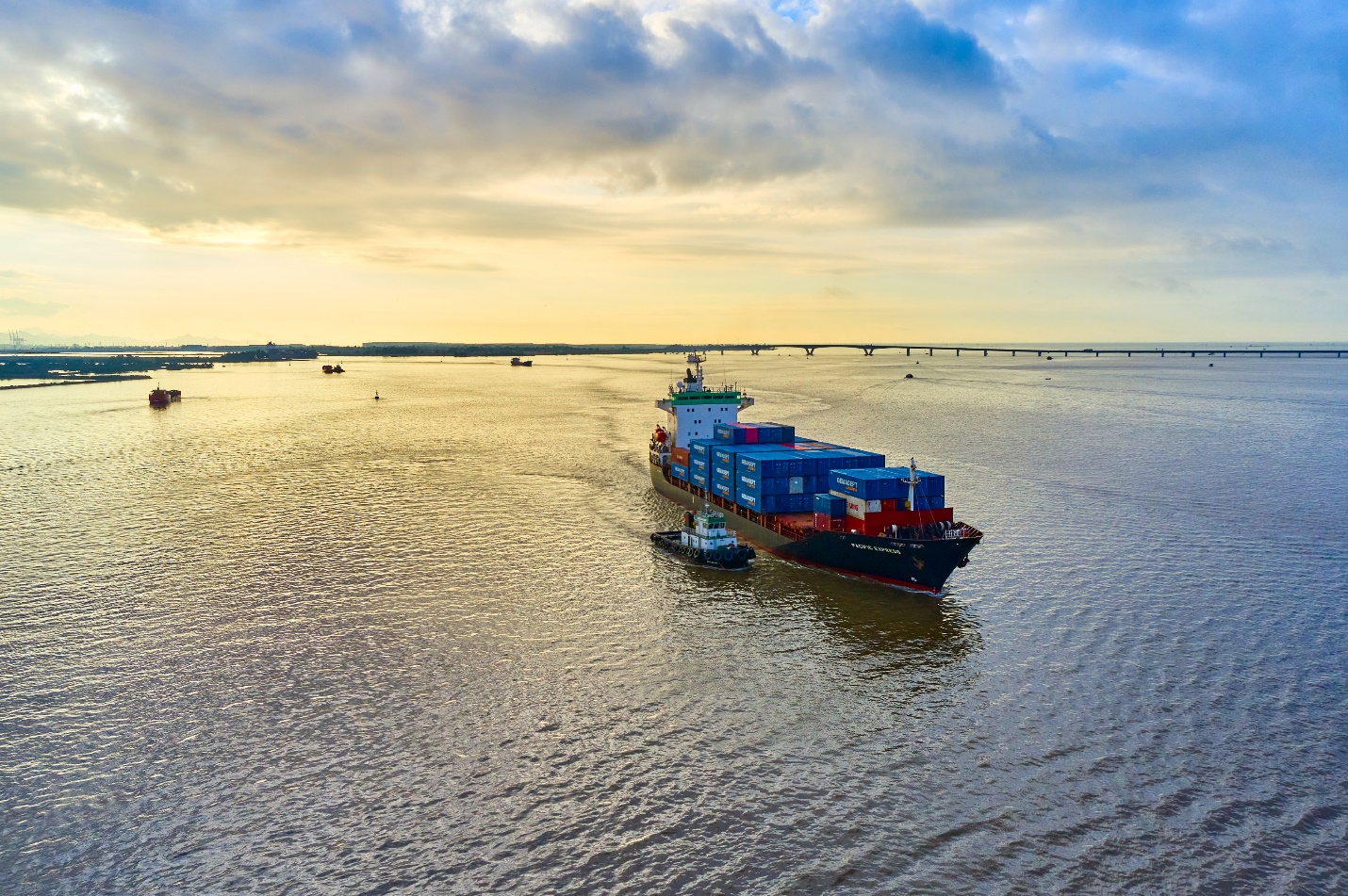


Company’s news
[ {{formatDate('2024-07-01T02:38:05.337Z')}}]

Inland waterway transport is gradually asserting its role in developing a green and sustainable logistics system in Vietnam. With cost advantages and the ability to minimize environmental impact, inland water transport is considered an optimal solution for transporting goods on long routes.
According to the World Bank, transporting using a 700-ton vessel is up to 60% cheaper than transporting using a 100-ton truck over the same distance, while also reducing greenhouse gas emissions by 60%. This not only brings great economic benefits to businesses but also makes an important contribution to protecting the environment and responding to climate change.
Inland waterway transport infrastructure: Challenges and solutions
However, to fully realize this potential, Vietnam needs to invest heavily in infrastructure. According to statistics, currently, only about 15% of channels on the river have been dredged to a depth that allows large tonnage vessels to operate.
Investing in upgrading infrastructure, especially dredging key canals like Ha Nam in Hai Phong and Cai Mep - Thi Vai in Ba Ria - Vung Tau, alongside building modern and well-equipped logistics centers with advanced loading and unloading equipment at river ports, will be the key to promoting the development of inland waterway transport.
Cai Mep - Mekong Delta connection: Unveiling the promise of growth
Infrastructure development is always a prerequisite for economic development. Weak soil conditions and high subsidence rates not only threaten the stability of structures but also cause complex problems during construction and maintenance. Additionally, inadequate drainage system design can lead to flooding, severely impacting transportation and people's lives, especially during the flood season. To solve these problems, it is necessary to have appropriate design and construction solutions, while also considering new construction options such as elevated highways or focusing on developing inland waterway transport, a sustainable and effective solution.
Leveraging its extensive coastline and dense river network, especially in the Mekong Delta, Vietnam boasts great potential for developing inland waterway transportation. Guided by the Ministry of Transport's directives, Gemadept and industry leaders are researching and implementing the Cai Mep - Mekong Delta Inland Waterway route. This project serves as a prime example of this potential, aiming to connect Vietnam's largest agricultural and seafood hub with its biggest deep-sea port. Upon its completion, this waterway will not only reduce transportation time and costs but also significantly cut CO2 emissions, contributing to environmental protection and enhancing the competitiveness of Vietnamese agricultural products on the global market.

Compared to the current waterway route, the Cai Mep - Mekong Delta model route boasts superiority in all aspects. It shortens the distance by 40%, travel time by 50%, reduces fuel consumption by 50%, and increases cargo capacity by 25%. This project not only underscores the immense potential of inland waterway transportation but also opens new opportunities for optimizing logistics activities and achieving sustainable development within Vietnam's transportation industry. Focusing on investment and development of inland waterway transport serves a dual purpose: it presents an effective alternative to highway construction in the Mekong Delta while capitalizing on the region's natural water resources. This approach paves the way for a future built on sustainable development.
Going beyond the Waterway Transport Model Reoute project, Gemadept has been steadfastly affirming its pioneering role in fostering Vietnam's inland waterway transport sector. Boasting a formidable fleet of over 30 container river vessels, Gemadept is effectively harnessing both domestic and Vietnam-Cambodia inland waterways, thereby contributing to alleviating road traffic congestion and minimizing environmental pollution.

Going beyond investments in its fleet, Gemadept also actively proposes policies to support sustainable development. These include initiatives to help Vietnamese businesses access green finance for building environmentally friendly vessels and implementing green technologies in maritime and inland waterway transport.
Cai Mep - Mekong Delta: A Lever for Economic Development, Requiring Collective Efforts
The Cai Mep - Mekong Delta inland waterway transport route, with the potential to connect the Mekong Delta region with the Cai Mep deep-sea port cluster, is expected to become an important driving force for the region's economic development. With the transportation of goods by waterway, logistics costs will be significantly reduced, thereby promoting the production and export of goods of businesses in the region. In addition, reducing the number of trucks circulating on the road will also contribute to reducing traffic congestion and traffic accidents, bringing many practical benefits to the community and society.
Unlocking the potential of the Cai Mep - Mekong Delta inland waterway transport route requires on a collaborative effort from government, businesses, and the community. The government must implement supportive policies and incentives to attract businesses to invest in inland water transport. Businesses, in turn, need to proactively invest in modern fleets, cutting-edge technologies, and improved service quality. Finally, the community's embrace of a shift towards inland water transport services is crucial. By prioritizing these services, the community can contribute significantly to environmental protection and the development of a green and sustainable logistics system.